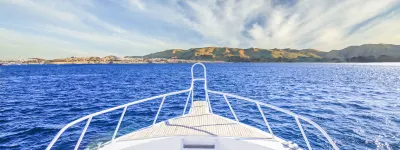As reported in designboom, designer Maor Bezner, together with sustainable infrastructure specialists, ECOncrete, have created a novel concept for artificial reefs. The final design reimagines the typical tripod breakwater concrete structures, and aims to harmonise the often conflicting worlds of marine development and conservation.
Being strong, durable, and easy to mass-produce, concrete is the preferred choice for most marine infrastructure, but can still disturb some fragile ecosystems. And, while it can provide an effective substrate for coral reefs, it can also leach toxic acidity into the water and is not the easiest surface for young polyps to nest on.

Studying the intricate marine ecosystems on the Israeli coastline, Maor Bezner and a team of ECOncrete’s marine scientists, identified the core principles behind the common coastal habitats. With the use of parametric design software, this blueprint was then brought to life, creating a concrete surface specifically-designed to help marine life thrive.
But, in order to make this a viable option for future marine conservation, it must remain easy to mass-produce. Implementing and adapting techniques from the plastic injection molding industry to fit conventional concrete casting molds, Maor Bezner was able to do just that.
Various models of the new design were then tested along the Herzliya coast in Israel, and after just four months, the concrete blocks were buzzing with life. The next step was to find the perfect receptacle to house the design.
Concrete tetrapods are commonly used as breakwater units to protect coastlines around the world. In fact, it’s estimated that nearly half of Japan’s coastline has been covered or altered by tetrapods. Fitting their new technology to a classic tetrapod mold, the team created the first ever ‘biopod’, with each leg encapsulating a mini underwater habitat. And, even better, the interaction between multiple biopods is remarkably similar to the interaction between marine ecosystems.
This unique and highly effective design bridges the gap between coastal development and marine conservation, setting a benchmark for future innovation.




